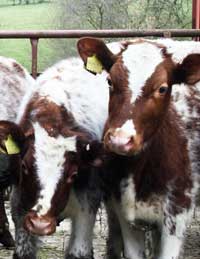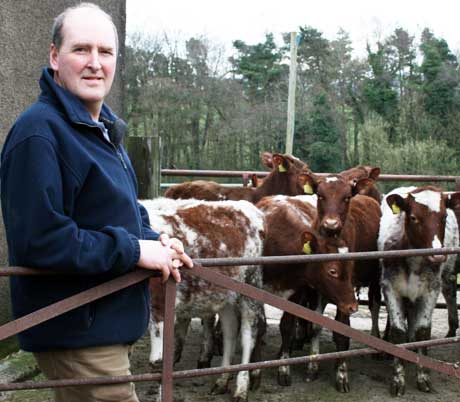Dairy Shorthorns prove their worth

Breeding and milking long-lasting cows with minimal hassle is what drives a Cumbrian farming business.
Durability or longevity – call it what you will, but when it comes to Dairy Shorthorns it’s undoubtedly the breed’s trademark. It’s a trait that is in vogue among all dairy farmers, but for the Dent family from Kirkby Stephen, Cumbria, it is one they have never underestimated and one that has ensured their continued loyalty to the Dairy Shorthorn breed.
While their Winbrook cattle could never be mistaken for anything other than Dairy Shorthorns, compared with the breed 50 years ago they have improved in stature and body capacity and now impress for an overall “modern” look without any trace of being “shelly”.
And it is by skilled and careful breeding the Winbrook Dairy Shorthorns have been improved through the use of red-and-white genetics while retaining their hardiness and wearability – traits that remain strong in a gene pool that commercial black-and-white herds are now keen to dip into.
David Dent is the third generation of the family to run the herd, although father George Dent, who is 90 years old, retains a keen interest. David is in no doubt it is the breed’s ability “to thrive and to last” that has never made him question his allegiance.
“Never before has the cost of replacements been so relevant to the amount of money you make out of milk. But is chasing extra litres really the answer to making more money out of dairy farming?” asks Mr Dent.
 |
|---|
| Skilled and careful breeding means the Winbrook Dairy Shorthorns have improved stature and body capacity. |
“I know what these cows leave me at the end of the year and I’m satisfied with it. The sturdiness and strength of the breed is a tremendous advantage,” he says.
Current figures show margins at 9.88p/litre and when studying the herd’s costings there are no high vet bills slicing into profits. And when watching these cows move about the buildings the word surefootedness comes to mind. “We never have a foot trimmer on the farm,” says Mr Dent.
The herd lost more than 150 head during the 2001 foot-and-mouth outbreak and was left with just 39 heifers, virtually wiping out more than 50 years of breeding.
“We never considered changing breeds, but as we’ve re-established the herd we continued to use a range of red-and-white genetics from red-and-white Holstein, red-and-white Friesian, American Shorthorn and Swedish Red – but it’s got to be done carefully.
“Using red-and-white Holstein bulls simply to improve yield is a non-starter in this herd. I won’t consider any red-and-white bull unless it has a good plus-protein figure and has high trait scores for legs, feet and udders.
“However, we find first-generation blended heifers can give up to 1000kg more than their dams in their first lactation.
“Good locomotion is also paramount. Our cows are survivors and I don’t want to introduce anything to undermine that. I want a moderate improvement in stature and an increase in body capacity. Udders have improved out of all recognition. And anyone who hasn’t looked at this breed for 20 years would be amazed at how udder quality has improved.”
Achieving the best the “outside” red-and-white genetics have to offer, without sacrificing the Dairy Shorthorn’s strength’s, is the constant challenge in this breeding programme.
“Our cows are about 65-75% Dairy Shorthorn – I would never use a pure Holstein bull on a 50% Holstein/Dairy Shorthorn cow.”
Winbrook King Henry is one of the most influential bulls to emerge from the herd’s blended pedigrees. By the American Shorthorn sire Kingsdale Peris Champ and out of a cow from Henry Teverson’s noted Stowfield herd, King Henry has been widely used at AI producing cows milking to seven and eight lactations with good type, high on fat and protein and good temperament.
Management of the Winbrook herd is “simple and straightforward”. Cows are fed silage in a central feed passage and cake in the parlour and are averaging about 7000kg at 4.27% fat and 3.33 protein.
“Breeding long living cows with minimal hassle is what drives the business. Getting high yields isn’t the be all and end all and it’s what you’re left with at the end of the year that’s important. So it’s no surprise there’s increasing interest in Dairy Shorthorns.
“Breed society registrations and membership are up, with 50% of all semen currently being sold by Red Cattle Genetics bought by herds outside the breed. I don’t think anyone can say the Dairy Shorthorn doesn’t have a role in the future of our dairy industry.”
